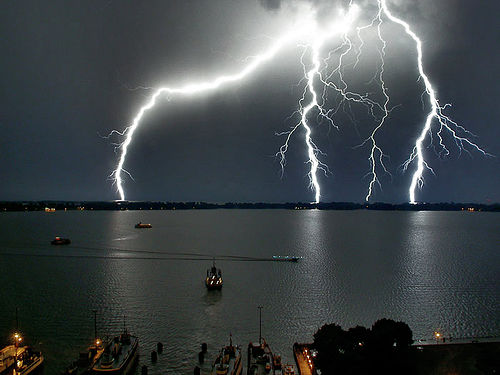Billy, I think a bit of that last post warrants repeating: BENNY read this again please.
.......lightning rods can be considered to work the same way, but with a copper rod sticking up it is the Zero voltage contour which is elevated up. This will attract lighting to it (instead of the house) as the lightning is "looking" for the easiest way to the zero potential surface (contour). With Benny's partially charged capacitor elevating the positive contours above it, it is REPELLING the lighting bolt - effectively telling the lightning: Look how high the potential is here above the capacitor - if you continue down towards it you will have a long way to go, thru many more positive voltage contours. Be smart - by-past the high voltage hill and take the quick way to ground.
Benny. Your capacity to ignore anything which is a problem is amazing.
I sort of admire it.
Have you seen St Elmo's Fire, Benny. I Haven't. I would like to.
There's something in a poem by Coleridge about it.
I'll look for it.
.......lightning rods can be considered to work the same way, but with a copper rod sticking up it is the Zero voltage contour which is elevated up. This will attract lighting to it (instead of the house) as the lightning is "looking" for the easiest way to the zero potential surface (contour). With Benny's partially charged capacitor elevating the positive contours above it, it is REPELLING the lighting bolt - effectively telling the lightning: Look how high the potential is here above the capacitor - if you continue down towards it you will have a long way to go, thru many more positive voltage contours. Be smart - by-past the high voltage hill and take the quick way to ground.
Benny. Your capacity to ignore anything which is a problem is amazing.
I sort of admire it.
Have you seen St Elmo's Fire, Benny. I Haven't. I would like to.
There's something in a poem by Coleridge about it.
I'll look for it.
Last edited:

